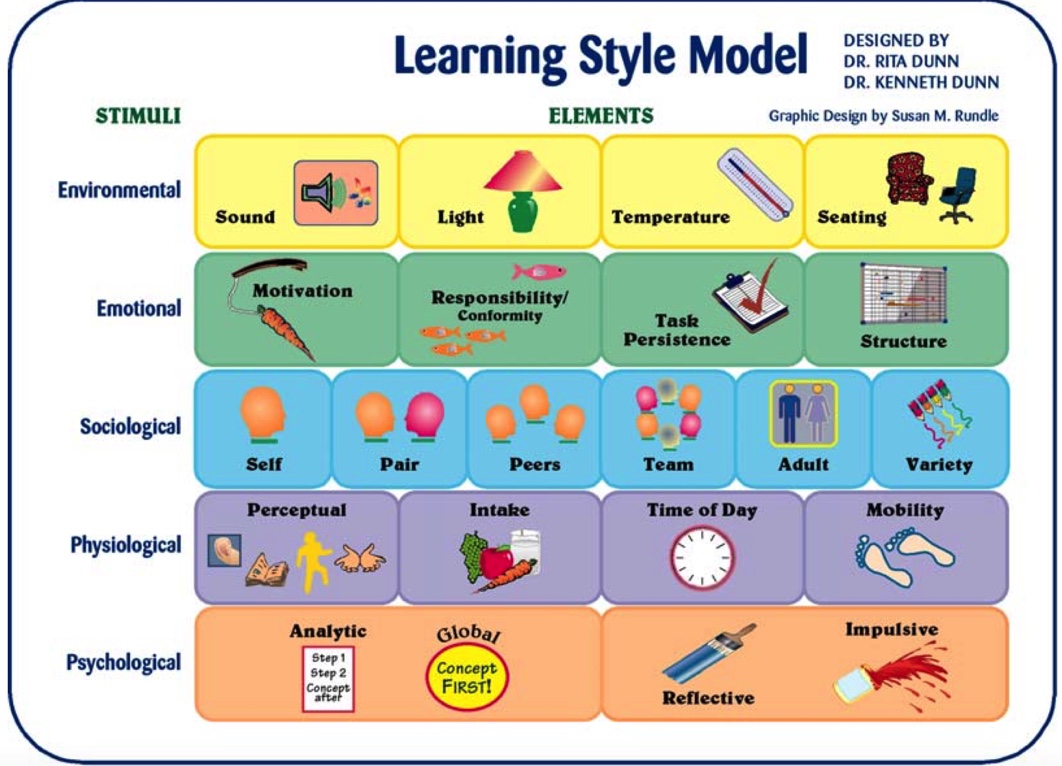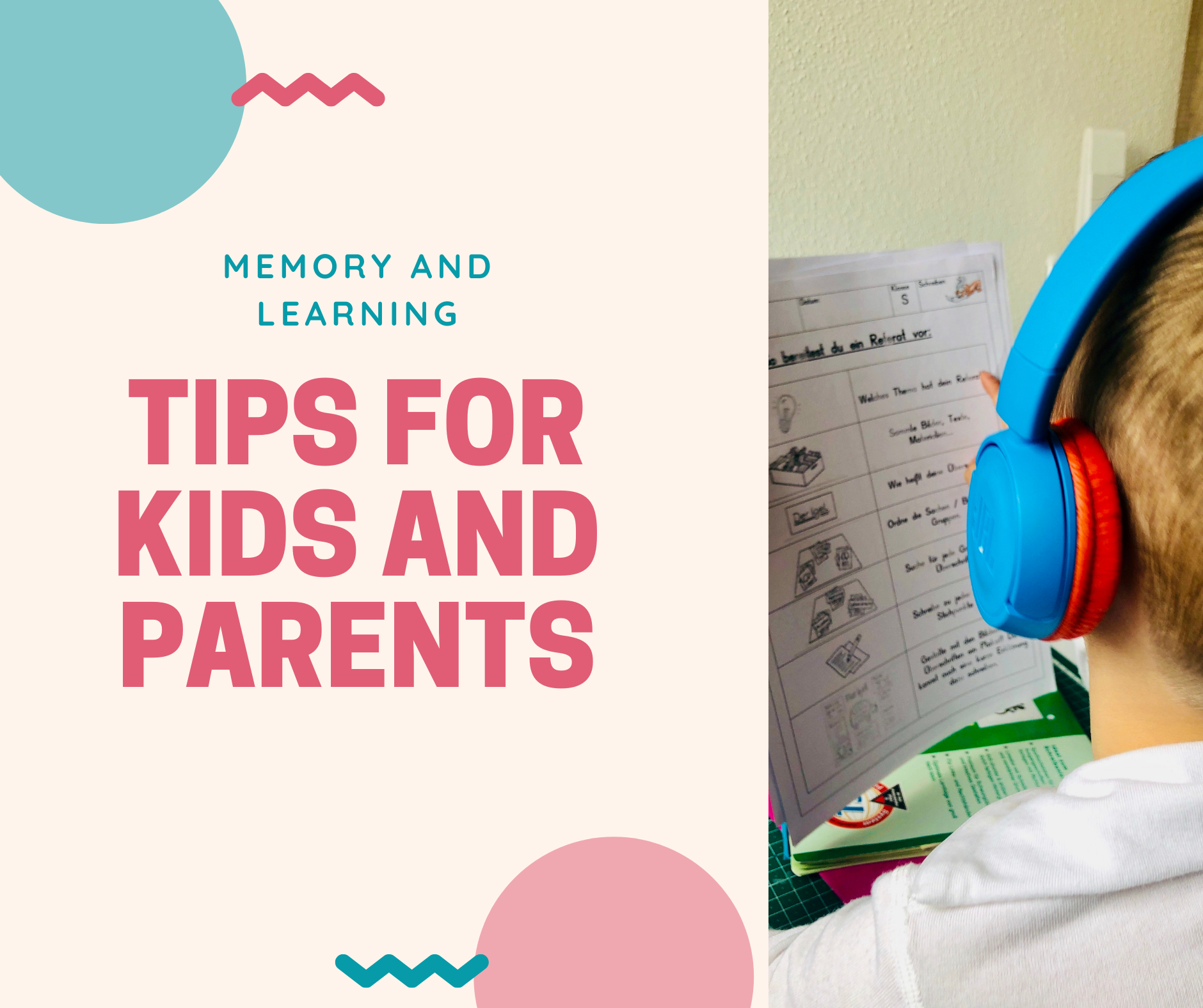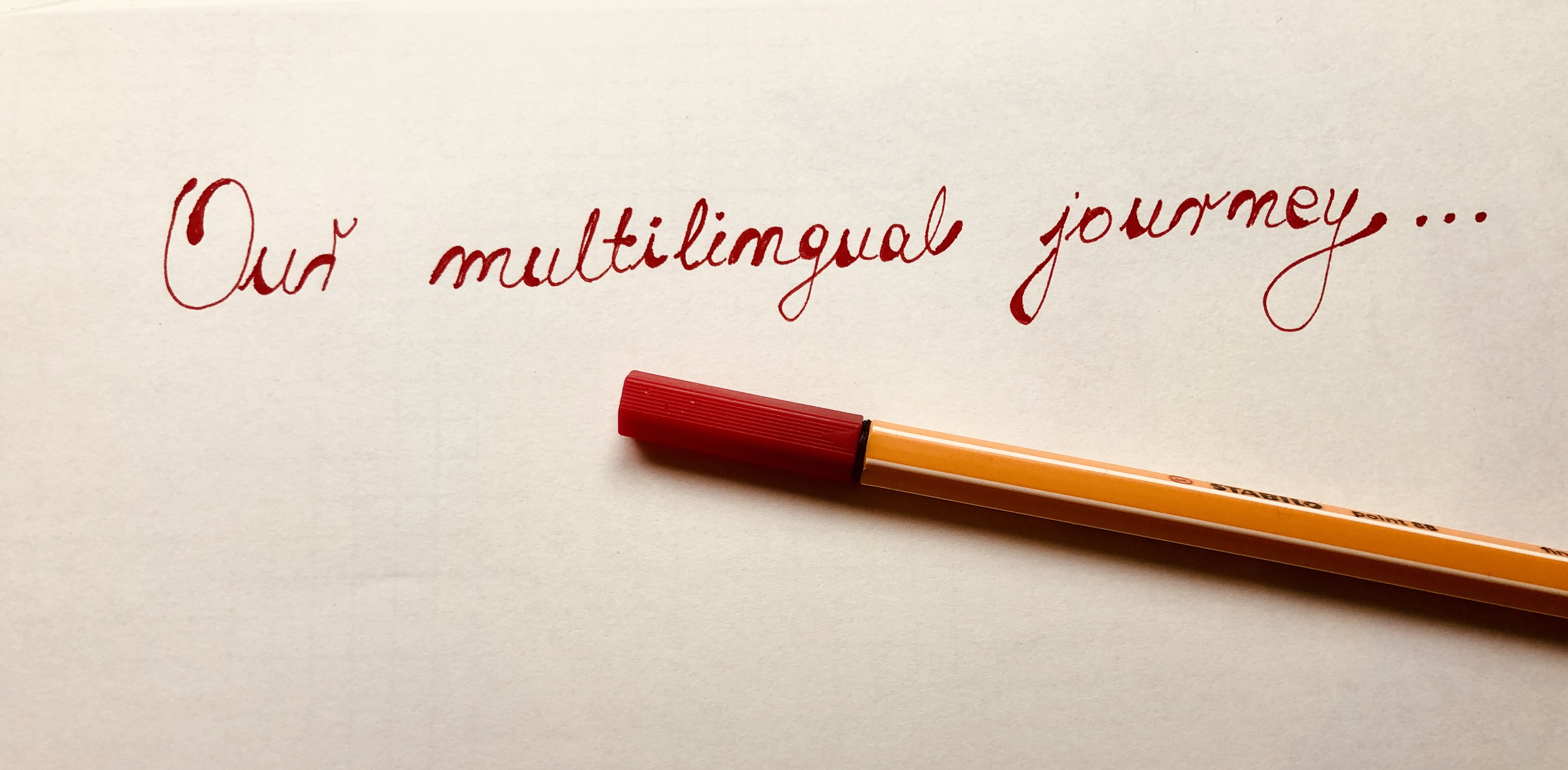Learning Styles - Glimpse into Theory

We all have different fingerprints, laugh in different ways and sign our names differently. Knowing that we are all unique and different, we shouldn't expect all children to learn in the same way and at the same pace.
Last year, when Einstein E and Power P were still in kindergarten, their teachers invited some of their older school friends. Sadly, but not that surprisingly, all of them talked about school in a not so positive way. The most common complaint was that they had to sit still for such a long time. A few weeks after this visit, we went to see one of the schools we wanted to apply for. "And where are the chairs?" asked Einstein E. The teachers explained that some children like to learn on the floor. Therefore, they have a huge carpet. Some children like to sit while writing. For those kids, there are a few desks and chairs. Other kids like listening to music while reading. That's why there are headphones on the shelves. Every child is different, learns at their own pace. We were more than happy when we got the confirmation letter from the school. And when we talked to the boys about being accepted to the school, Einstein E asked, "Is that the one where you can sit on a carpet and get up when you can't sit anymore?" Obviously, the stories his school friends had told him (not being allowed to move when you have to) were pretty scary for him.
However, it is not only about being allowed to move around or listen to music while studying. There are so many personal characteristics that make the same teaching method effective for some and ineffective for others. This set of characteristics is called - a learning style. Most of us are familiar with so-called VARK styles(1) - visual, auditory, reading/writing and kinesthetic.
Visual learners internalise and synthesise information best when presented to them in a graphic depiction of meaningful symbols. This means that arrows, charts, diagrams and other visualisations of information hierarchy help visual learners process information best. Various studies report that 75 of all information processed by the brain is derived from visual formats (2). Also, more than 40% of college students are confirmed as visual learners (3)
Auditory (or aural) learners are most successful when they can hear information presented to them vocally. This includes songs, rhymes, reading aloud and discussing course materials vocally with their classmates.
Reading/writing learners demonstrate a strong learning preference for the written word. These learners prefer handouts and PPT presentations, as well as written assignments. They should be encouraged to take copious notes during classroom lectures to help them process information and have an easier time recalling it later.
Kinesthetic learners are hands-on, participatory learners who need to take a physically active role in the learning process to achieve their best educational outcomes. They tend to engage all of their senses equally in the process of learning.
However, a learning style is more than merely whether a child remembers new and complex information most easily by hearing, seeing, reading, writing, illustrating, verbalising, or actively experiencing. It is about the interaction of these elements. Some authors (4) also add individual needs for quiet or sound, bright or soft illumination, warm or cool room temperatures, seating arrangements, mobility, individual needs for eating and/or drinking while concentrating and grouping preferences to this mix.

Image source: https://webs.um.es/rhervas/miwiki/lib/exe/fetch.php?media=lscy_rimanual_v1.pdf
The interaction of these elements occurs differently in everyone. Therefore, it is necessary to determine what is most likely to trigger each student's concentration, maintain it, and respond to their natural processing style to produce long-term memory and retention.
There are several things to remember about learning styles (5):
- Even among the closest family members, learning styles vary. Einstein E and Power P are twins. They are as close family members as it gets. However, Einstein E is analytic, focused and calm. Power P is all over the place - physically and in his thoughts. Einstein E can sit for hours while playing chess; Power P will sit down, stand up, run three laps around the table, sit on his hands, legs, head down and then make a move with a figure. So, don't be surprised if you can remember things you heard on the new, but your child needs to write it down or draw it to remember.
- Preferences for learning styles may change over time.
- Even when we don't learn in our preferred learning style, most of us can still learn some basic information. However, recognising and implementing our learning styles leads to better learning.
And most importantly - no single style that is better or worse than any other. Everyone can learn; we all just learn differently.
(1) First introduced by Fleming, N.D. & Mills, C. (1992). Not Another Inventory, Rather a Catalyst for Reflection. To Improve the Academy, 11, 137-155.
(2) Jawed, S., Amin, H. U., Malik, A. S., & Faye, I. (2019). Classification of Visual and Non-visual Learners Using Electroencephalographic Alpha and Gamma Activities. Frontiers in behavioral neuroscience, 13, 86. https://doi.org/10.3389/fnbeh.2019.00086
(3) Adkins, D., & Brown-Syed, C. (2002, August). Accommodating all learners: Critical inquiry and learning styles in the LIS classroom. Paper presented at the 68th IFLA Council and General Conference Glasgow, Scotland.
(4) Dunn, R., Beaudry, J. & Klavas, A. (2002). Survey of Research on Learning Styles. California Journal of Science Education - What We Know About How People Learn. 75 - 98
(5) Dunn, R. & Burke, K. (2005 - 2006). LSCY: Research and Implementation Manual. (The manual was adapted by permission from the Teacher Manual for the Global Learning Styles Education Program: Our Wonderful Learning Styles (Dunn, 1998) by Professor Rita Dunn.)

